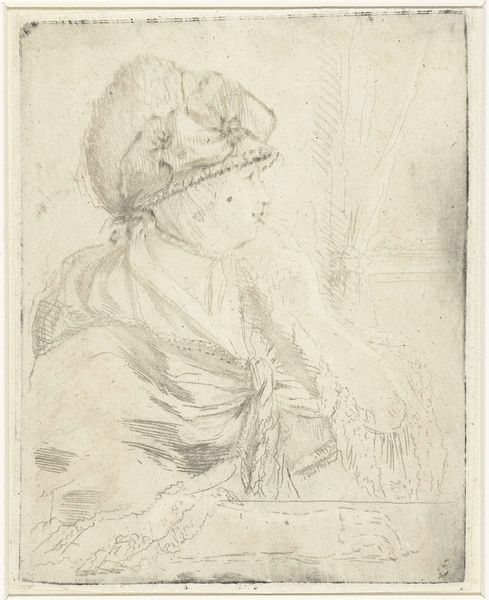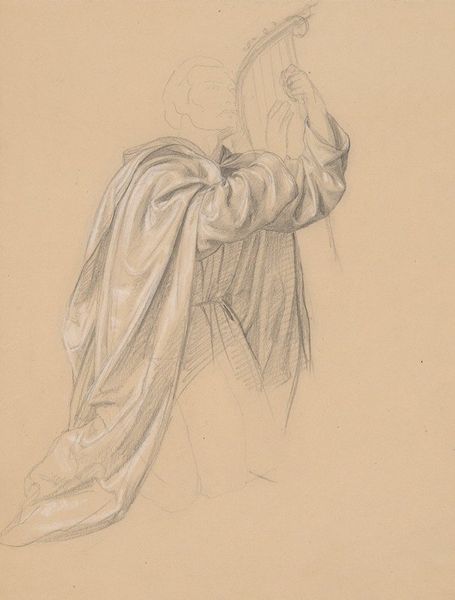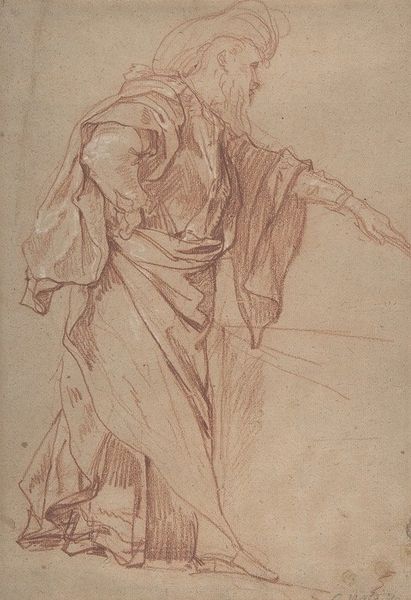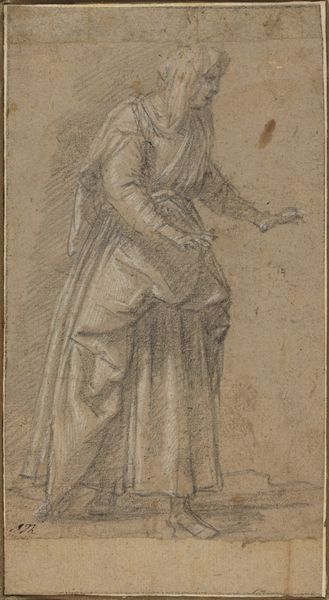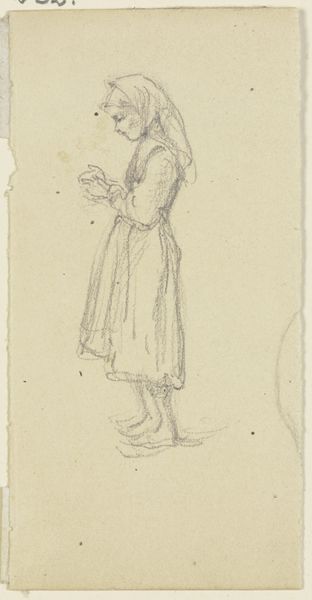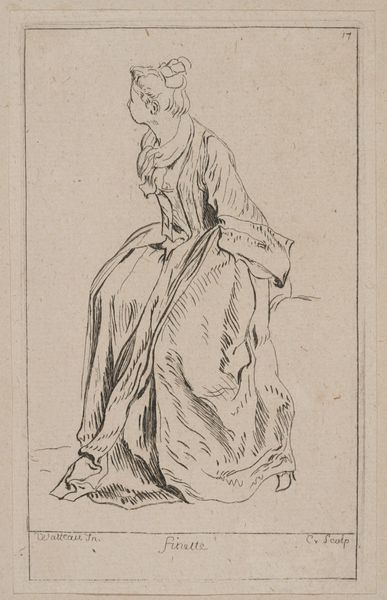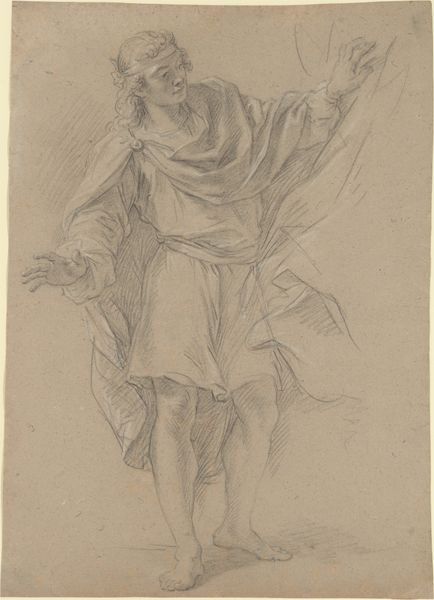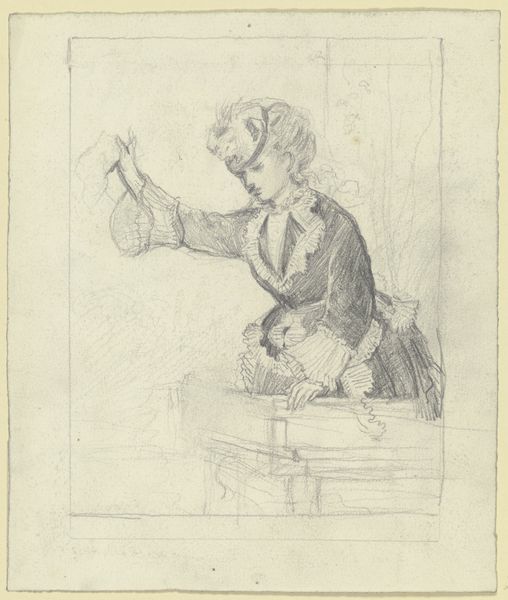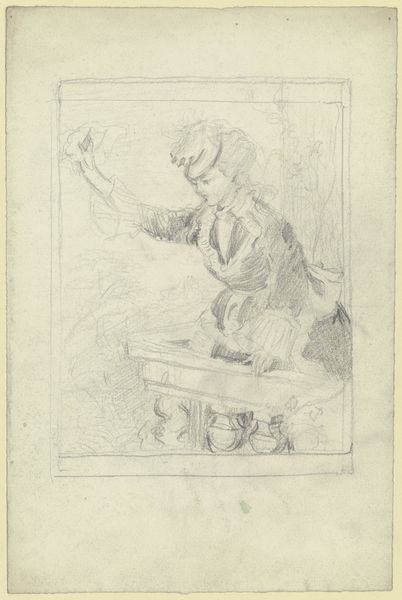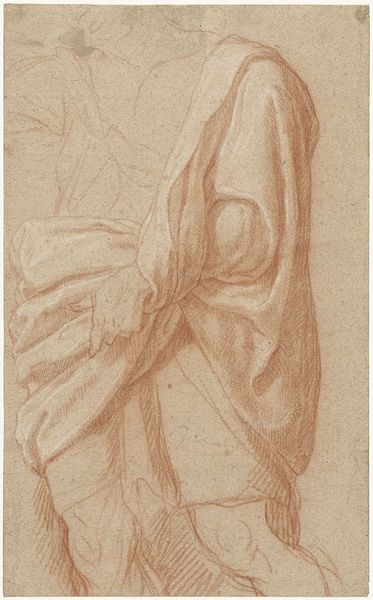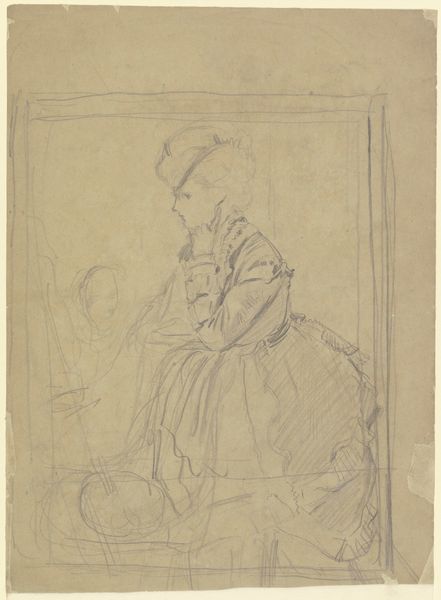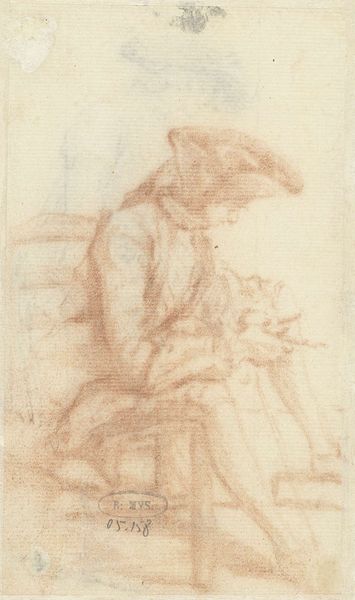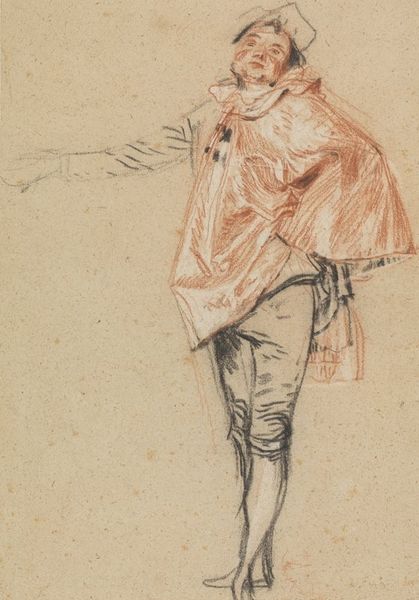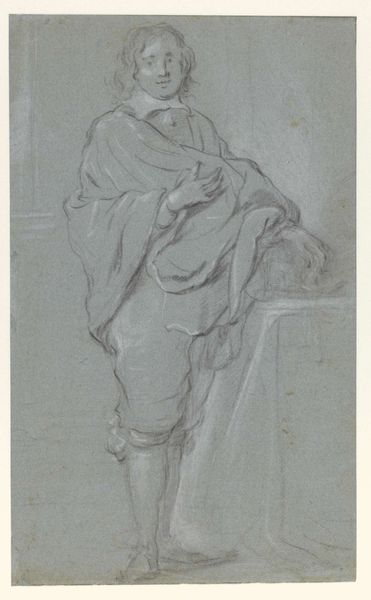
drawing, pencil
#
portrait
#
drawing
#
figuration
#
pencil
#
academic-art
Copyright: Public Domain: Artvee
Curator: We're looking at a preparatory drawing by Benjamin West, titled "Costume Study for the Portrait of a Lady." It's rendered in pencil. What stands out to you initially? Editor: The facelessness. It feels almost… haunting. Like a ghost sitting there. It's odd because you can still see the care given to the clothing and the setting, making the lack of a face that much more jarring. Curator: Right, a spectral presence almost. These kinds of costume studies were a vital part of portraiture during the era. Consider the sitter's social status being communicated through dress. West and other artists carefully controlled this representation, ensuring that the final portrait broadcasted the correct message about the individual's identity. Editor: Yes, the dress is clearly of high quality; those light folds of fabric speak volumes. This level of detail underscores a tension. The woman's identity is meant to be understood through her material presentation, but we never get to *see* her, she's ultimately absent as a distinct person. The flowing draped fabric is also echoed in the drapery of the background and creates a unified symbolic context for her position within her household. Curator: Precisely. And beyond the detail of the dress, the composition itself echoes the artifice of portraiture. It feels very staged, like a tableau, carefully constructed to reinforce certain societal norms. I also think there’s some theatrical influence here, West’s relationship with the stage. Editor: It does have a constructed quality. It makes me think about how identity is performed and how portraiture historically participated in that performance. You bring up theatrical elements, I'd imagine in her presentation and pose, this portrait seeks to convey respect, grace, and beauty - the archetypical high society image, presented on display in her best presentation as an emotional substitute for true identity. Curator: Absolutely, the political role of such images was also very significant. These portraits functioned to communicate not just individual identity but family lineage and social power during this era. West certainly understood this role. Editor: Well, I suppose considering the period it makes sense that her visual identity is almost secondary, and symbolic role becomes more pertinent as a projection of society than anything else. Curator: An interesting insight! Thanks for pointing out that tension between the subject's representation and her potential erasure. Editor: A fascinating piece. The blank face truly invited many questions about what portraiture really tells us.
Comments
No comments
Be the first to comment and join the conversation on the ultimate creative platform.
